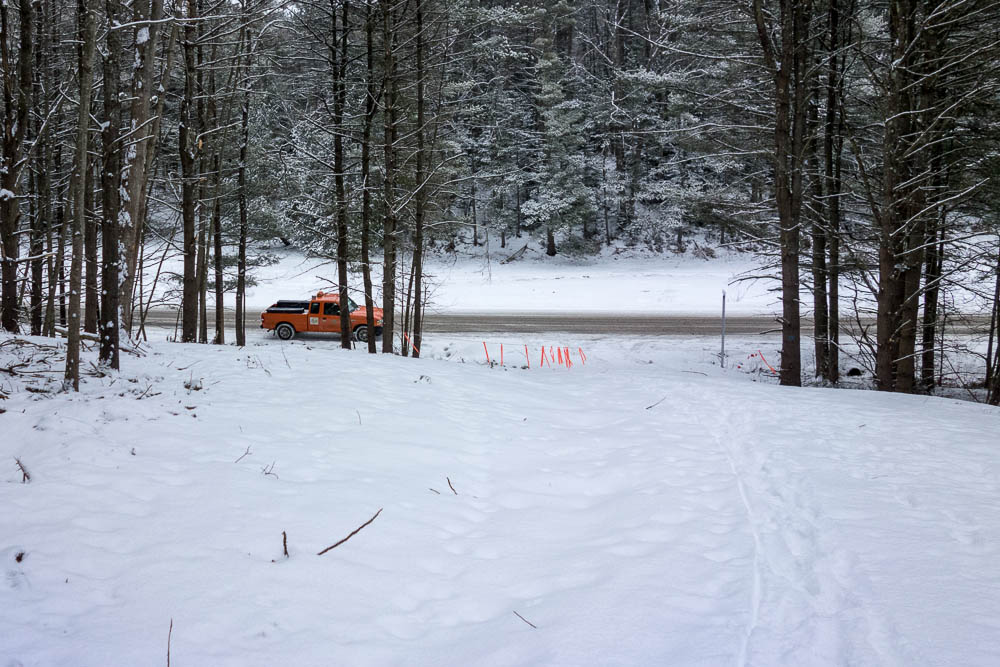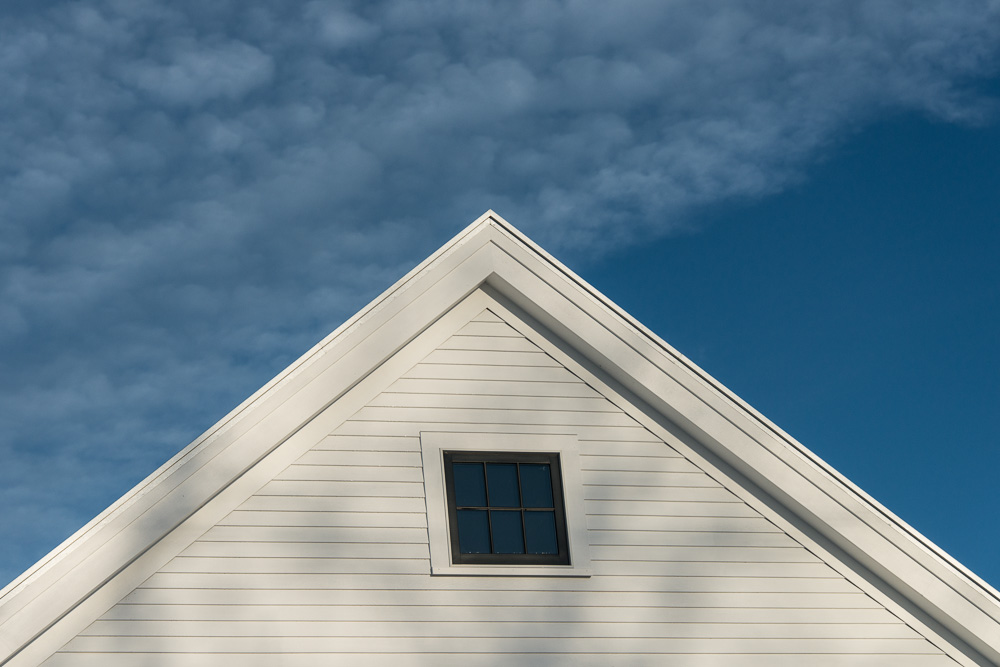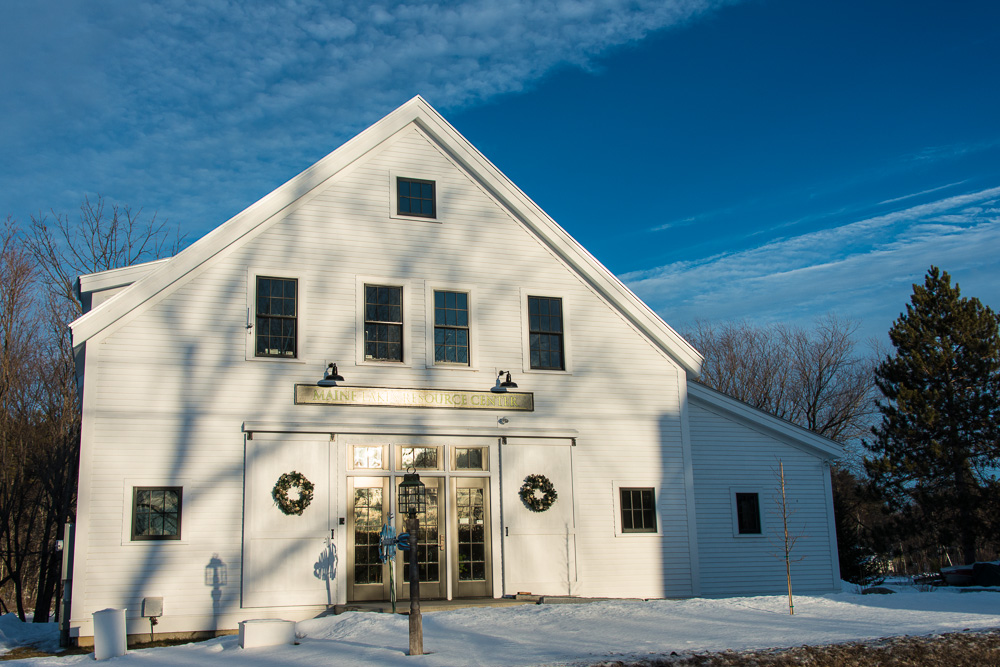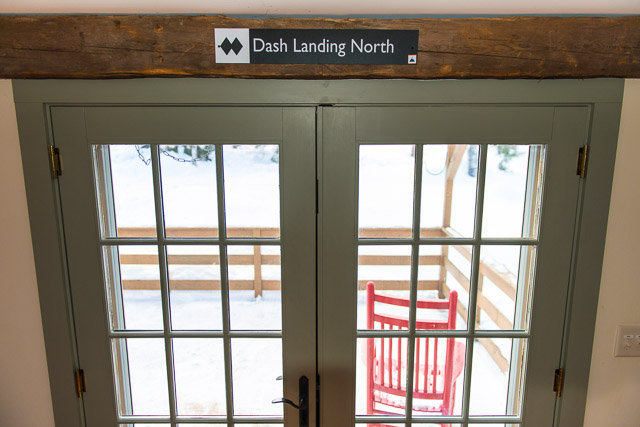A House In A Field
The story of a house. In a field. And how it gets there.
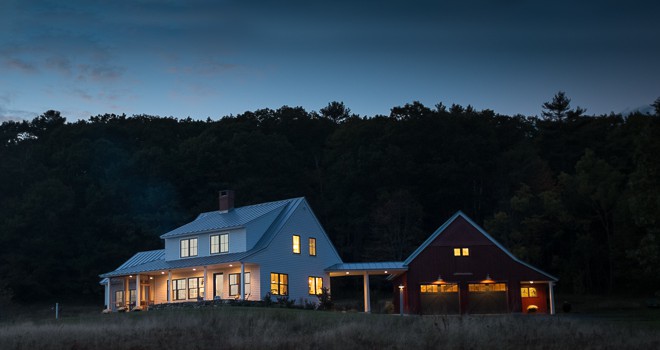
This is a good sign…
 Bad pun aside, it’s almost show time at 7 Dash Landing :
Bad pun aside, it’s almost show time at 7 Dash Landing :
- The roads are posted. For those of you from away, the freeze thaw cycle during Maine’s mud season can be tough on the roads. As a result, most municipalities prohibit “heavy loads” to save wear and tear. “Heavy Loads” would include lumber trucks, well drilling rigs, cement trucks, excavators – pretty much everything you need to build a house. Great for the roads, but brutal on building schedules. But now they’re posted and we’re one step closer to starting the project.
- Our contractor is back from his vacation. We’ll talk more about the person we’re using for the project, but we have to finalize a few details first. In any case, it’s great to have him back in the state.
- More incredibly, we seem to have made a decision on the HVAC system. Somewhat to our surprise, we’re going to go with a low-volume forced air geothermal system. But after talking to two traditional heating companies, one alternative heating company and five geothermal providers, we’re convinced that it’s the right way to go. More on this later too.
But after ten months, it’s almost time…
Except for heat, hot water and air quality, we’ve got this thing nailed.
Aside from the publication of Steve’s W2 and social security number, this adventure’s biggest surprise to date has been — without a doubt — the complexity around choosing the right mechanical systems for Dash Landing.
Not only are decisions around heat, hot water and air quality critical to “livability,” but recent changes in technology have added far more options into the mix. And as we’ve come to find out, it’s often the consequences of interplay among decisions where the true challenge lies.
We had four basic criteria for our mechanical systems going into the process : 1) We’d like them to be dependable and simple to operate. 2) We’d like to hedge against future financial exposure. 3) We’d like to minimize our energy footprint and fossil fuel consumption and 4) We’d like them to be relatively affordable.
Our first line of offense is the structure itself. We agreed with Rob early in the process that our best investment was going to be a tight, well-insulated exterior shell. And after looking at a number of options including flash & bat and dense pack cellulose, we’ve decided to go with 4″ of closed-cell foam as our primary wall insulation and 8″ in the roof assembly. Barring a last minute change, our window selection is the Anderson “A” series. The “tight” part will come from the two blower door tests required in the construction bid spec :
“Blower Door Testing: Contractor to coordinate, schedule, and perform two (2) certified blower door tests by an independent party. Tests to be scheduled at (1st) post-insulation/pre-drywall, and (2nd) prior to substantial completion. Testing to achieve the following performance ratings: Test (1) pre-drywall = 1.5 air changes per hour at 50 pascals. Test (2) prior to substantial completion = .5 air changes per hour at 50 pascals.”
Maybe not at “passive haus” standard, but definitely a well-insulated structure. So how to heat it?
Option #1 and the “baseline” in the bid is radiant floor heat via a high-efficiency![]() condensing propane boiler. We’d get hot water through a tankless Rinnai, again through propane. We’d maintain air-quality through the use of an HRV system.
condensing propane boiler. We’d get hot water through a tankless Rinnai, again through propane. We’d maintain air-quality through the use of an HRV system.
Bullet-proof. Cost-effective. Easy to operate. Plenty of people in the area that could do any possible repairs. We already have Viessmann ski swag.
On the other hand, we’re not keen on being overly dependent on propane. Not only a fossil fuel, but a relatively expensive one in Maine. And given our experience with electricity to date, we’re not holding our breadth on getting a natural gas line across Mast Landing any time soon.
Option #2 is a bit of a surprise. We’ve been reading about evolutions in the heat pump![]() industry and Rob introduced us to a local vendor who believes our house is tailor made for a Daiken Altherma. A bit of a “swiss-army knife” unit — not only would it generate heat for the radiant floors, but the same unit would also handle hot water. As an added bonus, the unit will also handle air-conditioning via a ERV system. A portion of the unit would be installed in the basement, another portion would be outside. Early heating load calculations indicate that we’d save $1,200 a year over the propane baseline.
industry and Rob introduced us to a local vendor who believes our house is tailor made for a Daiken Altherma. A bit of a “swiss-army knife” unit — not only would it generate heat for the radiant floors, but the same unit would also handle hot water. As an added bonus, the unit will also handle air-conditioning via a ERV system. A portion of the unit would be installed in the basement, another portion would be outside. Early heating load calculations indicate that we’d save $1,200 a year over the propane baseline.
Radiant heat, hot water, air conditioning and save money? Sounds a bit too good to be true, huh? But it’s the references that we find most interesting. These units are used in cold climates all over the world and the feedback is overwhelmingly positive. When someone in northern Sweden raves about the device, it gets your attention. Dependable and reliable. Good to -4F degrees and comes with a back-up heater that kicks on at low temps.
At the same time, it’s a heat pump. And anyone who has grown up in Maine remembers the last time that heat pumps tried to make it here. Let’s just say that it didn’t go well. (Think “noisy tinker-toy.”)
Option #3 is geothermal. This is where the interplay among decisions has an impact. Our philosophy of “insulation first” and resulting low heat requirements make the payback on geothermal’s high upfront fixed costs a challenge. (Drilling those wells isn’t inexpensive.)
Our philosophy of “insulation first” and resulting low heat requirements make the payback on geothermal’s high upfront fixed costs a challenge. (Drilling those wells isn’t inexpensive.)
But we’re still intrigued. When done right, we can’t help but believe that geo would be the simplest. Everything installed in the basement. Sure, it’s another kind of heat pump, but without the low-temp issues.
We’ll know a lot more about geo’s feasibility when we get pricing back next week. But after talking through a myriad of options including oil, wood pellets and nearly everything else imaginable, it’s going to come down to one of these three choices.
Fasterer and Fasterer
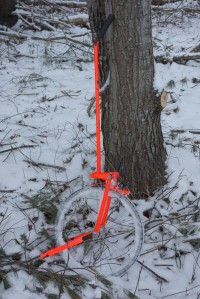 The installation of utility poles down Lower Mast Landing appears to have unlocked powers beyond our imagination.
The installation of utility poles down Lower Mast Landing appears to have unlocked powers beyond our imagination.
On Tuesday, we met another CMP field engineer to discuss the process of bringing the power line to the site. Measured the driveway (278′) with a nifty day-glo bike wheel, decided where the transformer would be placed and gave us an easement form. “Send this in and you’ll be in the system. Email it to us for the fastest service.”
Filled out the form later that day and hit “send.” Checked the CMP website a few hours later and we were there! THE VERY SAME DAY!
It’s like we’re flying.
Almost like this. But definitely different.
If you’re one of the two readers who have followed us from the beginning (thanks kids!), you’ll know our hopes for the design of a house in the field :
- We wanted it to fit into Porter’s Landing. There are some especially beautiful homes in that area of Freeport.
- The field location really says “farmhouse,” but we wanted something just a bit more “modern.”
- We found Rob through this project and it’s one of our favorites. But no one — most of all, Rob — wanted to make a xerox.
And while the outside design of the house has now been “all but done” for months, it’s always tough to imagine how those drawings will eventually translate to wood and windows.
During a recent meeting, Rob mentioned that he had been driving by the new “Maine Lake Resource Center” building in Belgrade and “…there’s a lot of similarities.”
Look for the colored window sashes, the extension to the right (Steve’s workshop), the natural colored metal roof, the sliding barn doors (ours will be on the interior), the prominence of square windows on the north side, etc.
Lots to like here…
Is It Wrong To Be Excited About Utility Poles?
Five months — almost to the day — after we made the first call to our comrades at Fairpoint, we now have utility poles leading to the Dash Landing driveway.
The best part? After 150 days, countless phone calls, begging, pleading, cajoling and a long series of Soviet collective jokes, it took Fairpoint approximately 90 minutes to set the poles.
We’re a LONG way from having electricity, phone or cable, but today was definitely one of progress.
Here’s a pleasant surprise…
Some of you already think that this is a tribute to those geniuses of retail — The Kardashians. A few of you with too much free time probably suspect a nod to Daria “Dash” Gaiazova.
But the smart money is here.
Nice way to start the week.
“You speak like a green girl, unsifted in such perilous circumstances.” – William Shakespeare
Email from Debbie today :
“We’re on Fairpoint’s construction schedule! They got the right-of-way permission today (so they say). Poles should be placed in a week or two. The construction group has a “fluid” schedule due to storms etc., but the woman on the phone said ‘I’m not in that department and they do their own thing, but construction should be light at this time of year.”
Countdown. Starts. Now.
The Department of Right of Ways
 Lots of work happening in the background lately regarding contractor selection.
Lots of work happening in the background lately regarding contractor selection.
But perhaps more significantly, Fairpoint told us today that our electricity permit has now been transferred to “The Department of Right of Ways.”
Seriously, “The Department of Right of Ways.”
Rejoice, commrades! Electricity will free the people!

